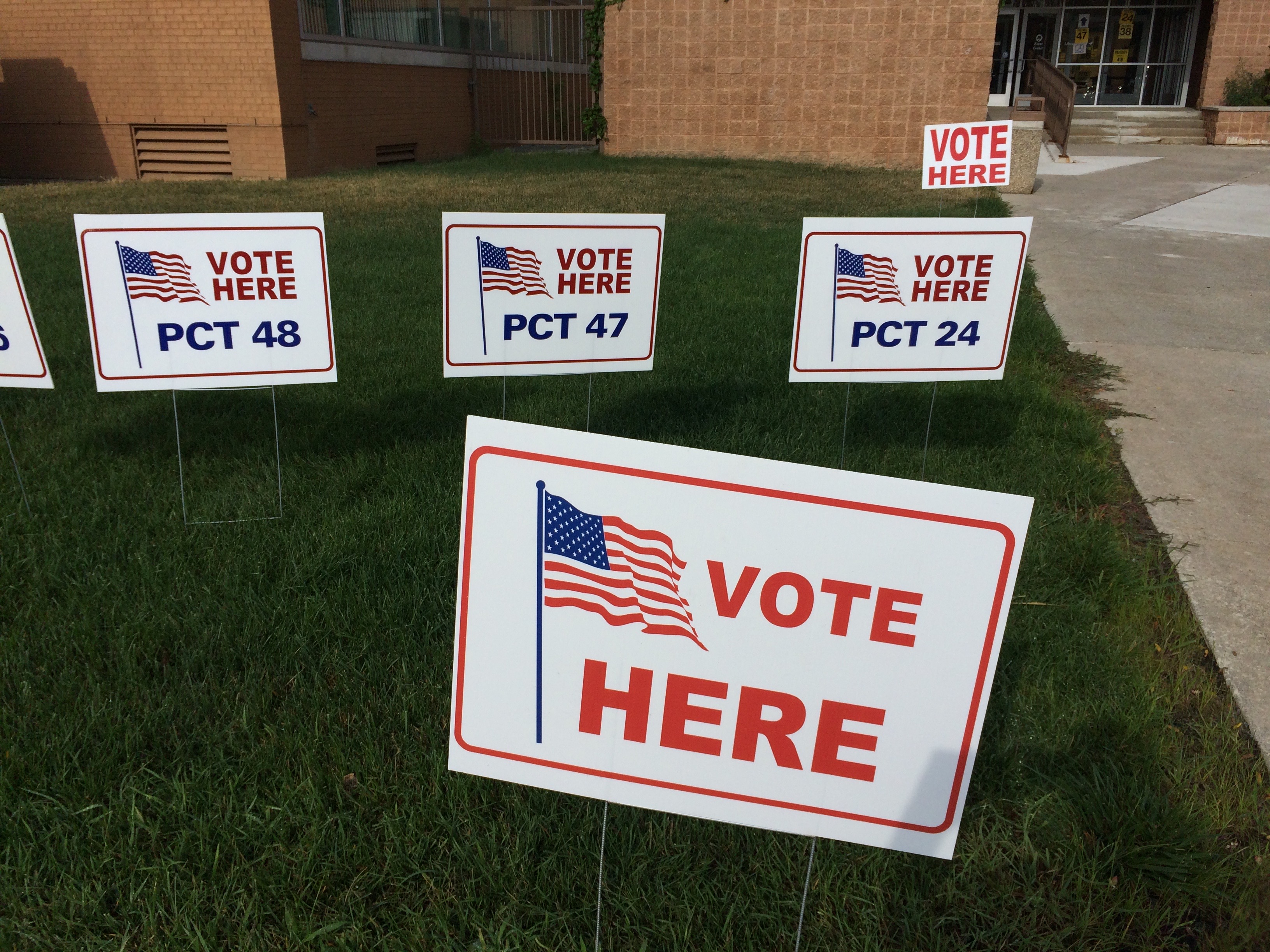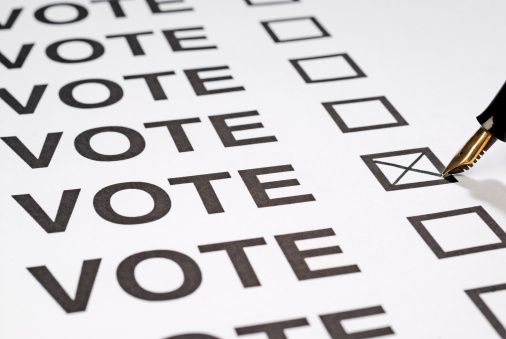By Paul Rozycki
This year’s midterm election could be like most other midterms….except when it’s not. And it looks like it’s not going to be like most midterm elections.
The usual midterm election
Here’s what usually happens in most midterm elections. First, the turnout is lower than during a presidential election year. While we usually get about 60 percent of potential voters turning out in a presidential year, in a midterm we normally only get about 40 percent. Second, the president’s party normally takes a beating. In the last 75 years the party in the White House has gained seats in the U.S. House only twice during a midterm election. Third, because the president isn’t on the ticket, the “all politics is local” maxim kicks in, and most races are decided by local issues and personalities.
Why this year could be different
That’s what usually happens, and it might be what happens this year, but this year looks different for a number of reasons.
If this year’s recent primary elections are any indication, voter turnout is remarkable. In nearly all the special elections held so far, the voter turnout has been much larger than expected. Democrats have shown the largest increase, but Republican turnout is up as well. While there are a number of reasons for this, two stand out–Donald Trump and the #MeToo movement.
Response to Trump
It’s no surprise that the response to Trump’s election has been intense and divisive. Those voters who realized that by staying home in 2016, they helped elect Trump, have shown a new commitment to voting in a year when they typically don’t. Democratic turnout has shown a large increase in most of the special elections this year.
In response, Trump’s supporters, who feel their candidate is being unfairly treated by the media and the public, are also energized and feel the need to defend their candidate. As part of the campaign to energize the Trump base, his supporters have raised the threat that if Democrats have a “blue wave” in November, Trump could face impeachment.
 So even though Trump isn’t on the ballot, in a time of an “All-Trump-all-the-time” news cycle, this is still a Trump election, both for those who loath him and those who love him. Republicans, who embraced Trump to win their primary elections, face a dilemma in the general election. While the Republican base still strongly supports Trump, that base is shrinking, and many moderate Republicans and independents are pulling away from him. More than most midterm elections, this year’s has major national implications.
So even though Trump isn’t on the ballot, in a time of an “All-Trump-all-the-time” news cycle, this is still a Trump election, both for those who loath him and those who love him. Republicans, who embraced Trump to win their primary elections, face a dilemma in the general election. While the Republican base still strongly supports Trump, that base is shrinking, and many moderate Republicans and independents are pulling away from him. More than most midterm elections, this year’s has major national implications.
The response to Trump has been an even stronger motivator for Democratic voters. One local Democratic activist described the Trump effect as “the gift that keeps on giving” because of the way he drives Democrats to the polls and energizes them.
This year there is a good chance the Democrats could win a majority in the U.S. House. They only need to gain 24 seats to do so. While there is a possibility they could win a majority in the U.S Senate, the numbers are much more challenging. The Democrats need to gain only two more seats, but, of the 35 Senate seats up this year, 26 of them are held by Democrats. So they would need to keep every seat they now have, and pick up two more, and 10 of those Democratic seats are in states Trump won in 2016. It’s possible, but it’s certainly a more difficult task than winning the U.S. House.
The #MeToo Movement
The second difference in this year’s election is the impact of the #MeToo Movement. In response to the Harvey Weinstein scandal, and the long list of celebrities and executives who have been shown the door after facing accusations of sexual harassment, women have entered the political fray in record breaking numbers. Both as candidates and as voters, women have generally been more Democratic than men, and early indications are that they will be voting in greater numbers than usual. This year at least 229 women are running for the U.S. House and Senate, and 167 of them are Democrats. At least 12 women are running for governor and nine of them are Democrats. This year, for the first time in history, Michigan Democrats have nominated women for governor, secretary of state, attorney general, and the U.S. Senate. The Republicans have chosen a woman as Bill Schuette’s running mate. The current debate over the appointment of Brian Kavanaugh to the Supreme Court, and the accusations against him, only intensified the power of the issue of sexual harassment and the #MeToo Movement.
The end of the straight ticket vote
There is one more significant difference in Michigan this year that may surprise many voters. For 127 years Michigan voters have had the opportunity to vote a straight ticket—by marking a single box they could vote for all the Democratic candidates or all the Republican candidates. A recent court ruling has ended that practice. So this year voters will have to mark their choice for each and every office on the ballot—and there are a lot of them. At the very least it will make voting more time consuming, and may result in longer lines at the voting booth. Statewide, about half of all voters have cast straight ticket ballot in past years. In Genesee County it’s slightly higher—about 55 percent. In Wayne County is about 60 percent. Overall, the Democrats benefit from the straight ticket vote more than Republicans, but it varies with the area. In western Michigan Republicans are the beneficiaries of the straight ticket, and in south-east Michigan Democrats have the advantage.

The arguments for and against the straight ticket generally run along party lines. Democrats have favored it and Republicans have opposed it. Both are working for their own partisan advantage.
Those favoring the straight ticket argue that the party label is a good measure of what a candidate stands for—a kind of “brand loyalty.” This is probably more accurate today than in the past. Today if you are a conservative, traditional values, small government voter, you are more likely to find the Republican Party to your liking. Similarly, if you are a liberal who favors a more active government, favors diversity, and is open to non-traditional social values, you are more likely to prefer the Democratic Party. That wasn’t always the case, but today, in our divisive politics, conservatives and liberals tend to separate by party, with little overlap.
Ending straight ticket voting will most likely slow down the voting process as voters pick through a long list of candidates—from governor to the State Board of Education. That delay may well discourage voters. In November, because the change is so recent, this may be a major issue for voters, and could result in both delays and spoiled ballots.
Those who favor ending the straight ticket option argue that voters should take the time to learn about all the individuals running for office—from governor, to the Wayne State Board of Governors, to individual county commissioners.
Effects of straight ticket voting
Ending the straight ticket vote will have its greatest impact on the “down ticket” offices that don’t get much attention, such as the governing boards for the University of Michigan, Michigan State, and Wayne State Universities. Those offices don’t get much attention during the campaign, and the candidates win or lose based on how well their party does in a given year.
On the other hand, if voters have to go through the entire ballot they might be less likely to skip over the non-partisan contests such as local school boards, community college boards, and city council races. They might also be more inclined to vote on the proposals that are not part of a partisan ballot.
While it won’t be an option this year, one of this year’s ballot proposals will attempt to restore the straight ticket ballot in the future. (See the summary of all the proposals in this issue of EVM.)
Ways to inform yourself
More than any midterm election in recent memory this one is critically important for a wide range of issue. Voters can inform themselves in several ways.
First, the League of Woman Voters website Vote.411.org is an excellent way to learn about the candidates, issues and proposals on your ballot before you go to the polls.

Paul Rozycki
Second, there will be many forums where voters will have the opportunity to meet the candidates and learn about the proposals on the ballot. On Oct. 21 the East Village Magazine, the League of Women Voters, and the Flint Institute of Arts will be hosting a “Rally the Vote” event from 6 to 8 p.m at the FIA to inform and encourage voters. Look for event details in this month’s This Month in the Village and on the EVM Facebook page.
And finally, look elsewhere in the October print edition of the EVM to see a quick overview of some of the key races and issues on the ballot.
But the bottom line is, get out and vote! It matters more than ever.
EVM political commentator Paul Rozycki can be reached at paul.rozycki@mcc.edu.


You must be logged in to post a comment.